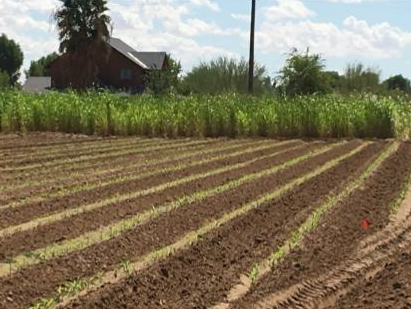
|
|
|
|

|
|||
|
|
|||
|
|
|||
|
Cultivation is probably the most commonly used method of weed control used here. In addition to immediate gratification, it can eliminate many small weeds. Newly cultivated fields look healthier and are free of weeds. The gratification of cultivation can be short-lived. In the long term, cultivation may be more harmful than good for weed control and soil health.
Most weed seeds are very small and have difficulty making it to the surface alive. Cultivation helps bring small seeds to the surface where they can grow. Cultivation is also an ideal method to spread and plant many weeds like Bermuda grass and Nutsedge. It also propagates established purslane and other weeds that re-root at the nodes. Cultivation will uproot and dry out many small weeds but if it is done too close to the crop it can damage roots. Rarely is cultivation used alone. It is often used in combination with and to incorporate herbicides. Many preemergent herbicides work by creating a chemical barrier at the surface. Cultivation can disrupt this barrier and reduce herbicide efficacy. It not only dilutes the herbicide but breaks up the soil structure so that herbicides, fertilizers and organic matter can leach below the region where they are needed 
|
|||
| Back | |||
|
For questions or comments on any of the topics please contact Marco Pena at the Yuma Agricultural Center.
|
|||
|
Home |
Cotton | Veggies |
Forages | Grains
| Citrus |
Crop x Crop Insects | Diseases| Weeds | Pesticides | Economics | News | Weather | Research | Photos | Contacts | General Info. Copyright © 2001 University of Arizona, College of Agriculture and Life Sciences Webmaster: Al Fournier (acis@ag.arizona.edu) |
|||